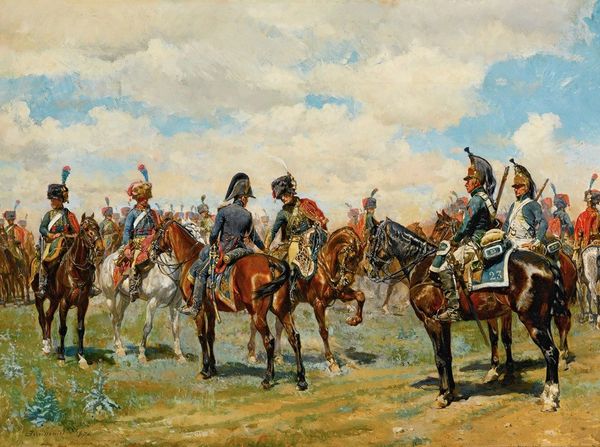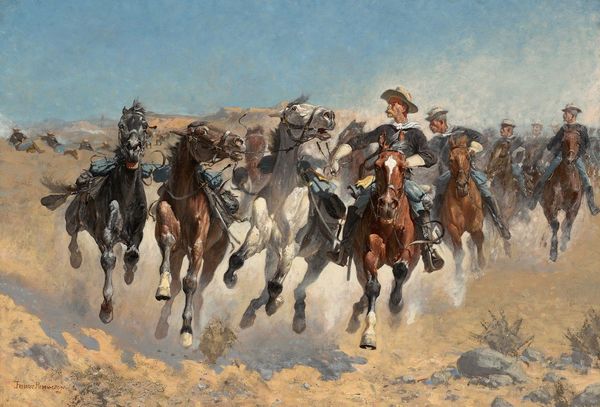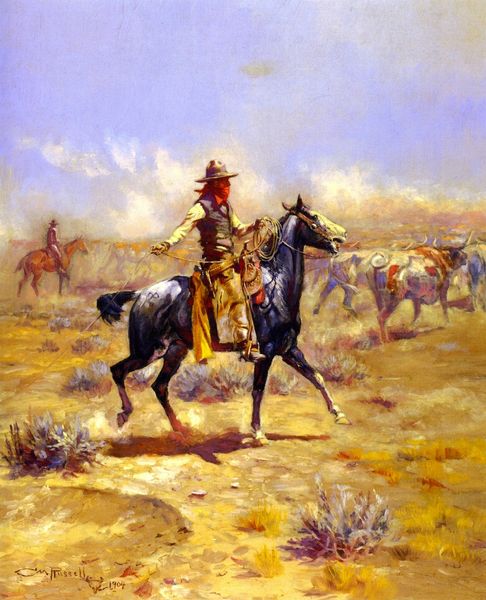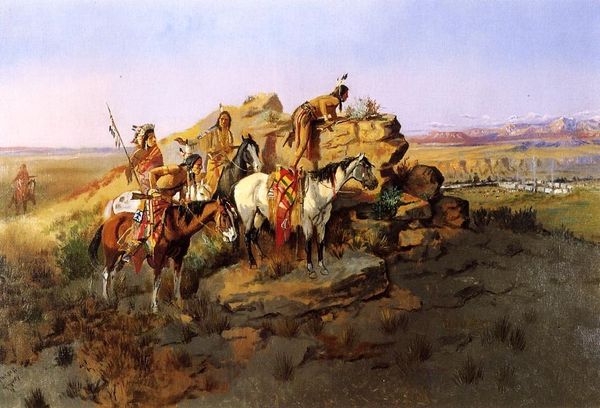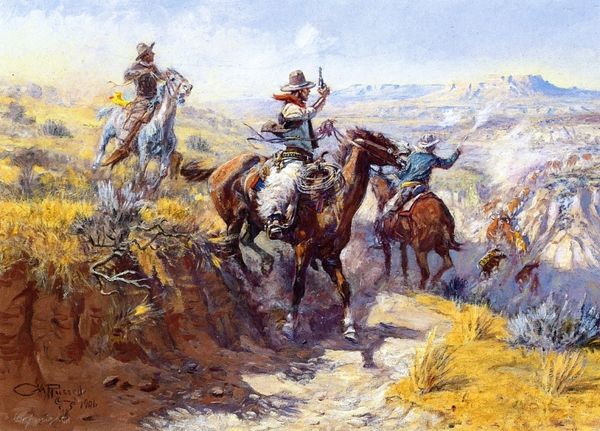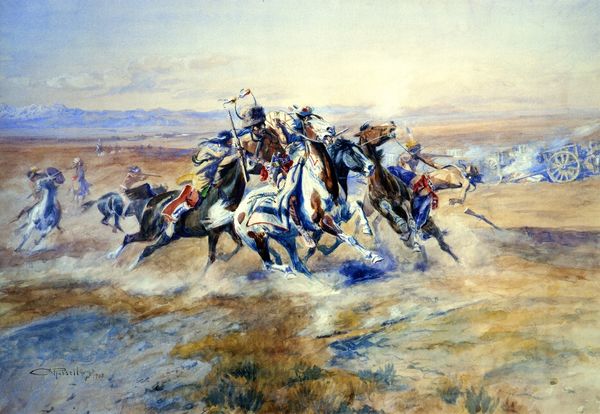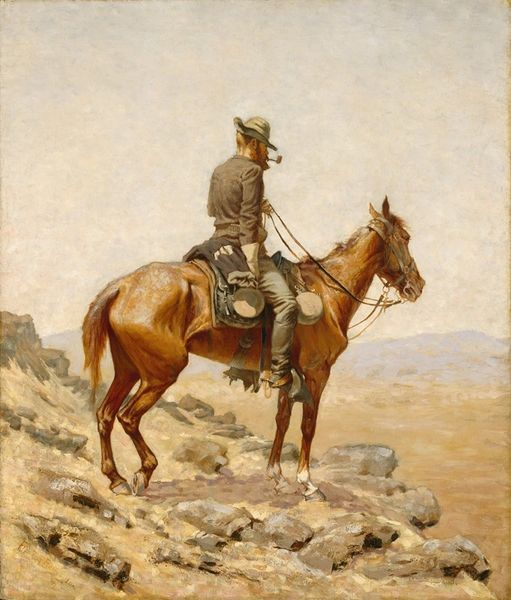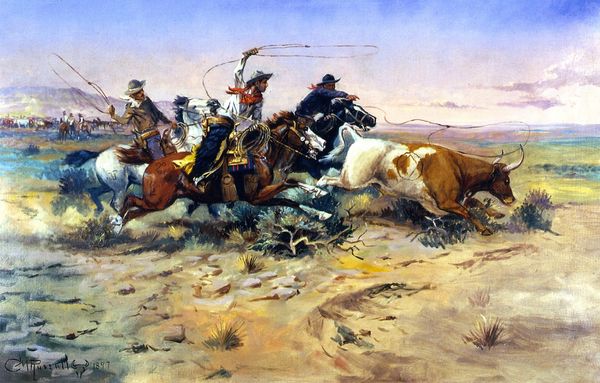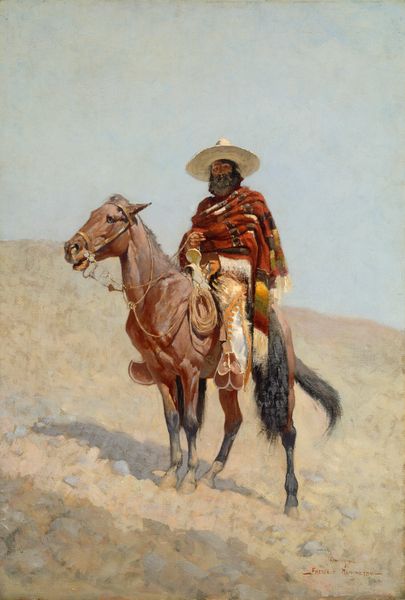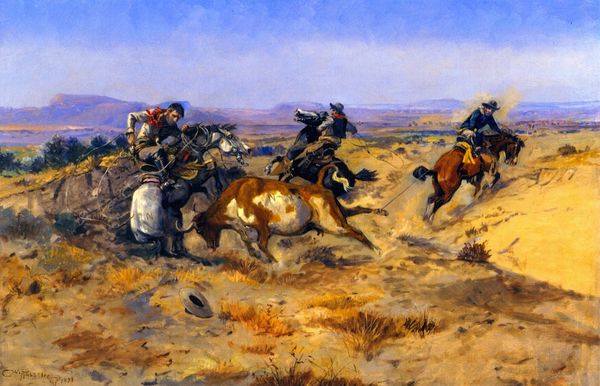
oil-paint
#
portrait
#
gouache
#
figurative
#
oil-paint
#
landscape
#
figuration
#
oil painting
#
genre-painting
#
history-painting
#
realism
Copyright: Public Domain: Artvee
Editor: This is Frederic Remington's "The Mexican Major," an oil painting from 1889. There's such a clear, almost documentary style to it, despite it being a posed scene. What strikes you about this depiction of a Mexican military parade? Curator: The first thing that stands out is how Remington, an American artist, engages with a Mexican subject. Given the complex and often fraught history between the United States and Mexico, especially in the late 19th century marked by territorial disputes and cultural misunderstandings, it’s crucial to ask: Whose perspective are we seeing? How might Remington's own cultural biases influence this portrayal? Editor: So, you're questioning the point of view. Curator: Precisely. Notice the almost theatrical display of military might set against the stark, almost barren landscape. What does that juxtaposition suggest to you about power and its relationship to the environment? Moreover, consider the idealized portrayal of the Major. Is this Remington attempting to legitimize or perhaps romanticize military authority? Think about how uniforms function as symbols of identity and control within hierarchical structures, and what statements Remington might be making about nationalism or even colonialism through this particular image. Editor: I didn't think about the power dynamics involved...it changes the painting for me. The Major looks confident but in control. He isn't celebratory but neutral in emotion. Curator: Right, that careful composure invites reflection. Consider what the historical context infers and how the imagery might act to soften the hard realities of a place, like the U.S.-Mexico border. It prompts one to examine whose stories are amplified and which ones are relegated to the background. Editor: I guess it really means you have to question what an artist omits to truly understand their perspective. Thanks for shedding light on that. Curator: Exactly! Analyzing this painting invites us to engage with issues of representation, power, and historical narratives that are vital to understanding the work's place in history and how it resonates today.
Comments
No comments
Be the first to comment and join the conversation on the ultimate creative platform.
